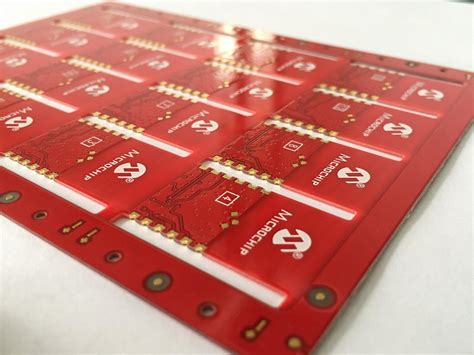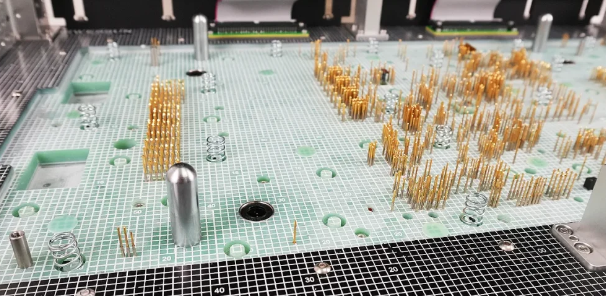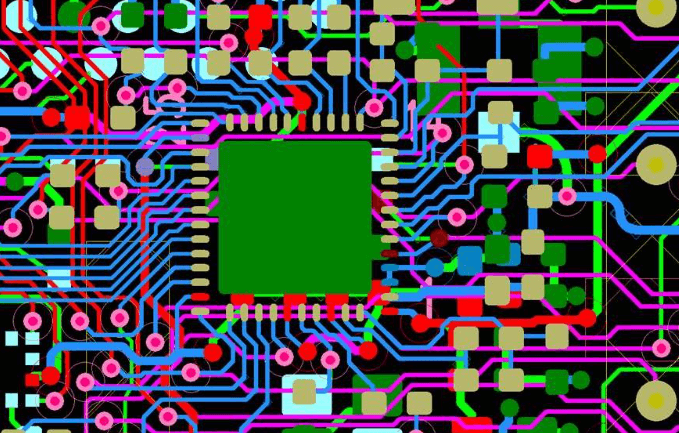Efficient Rapid Prototyping and PCB Assembly Solutions

Key Takeaways
In today’s fast-paced market, efficient rapid prototyping and PCB assembly processes are essential for organizations aiming to accelerate product development and improve reliability. Rapid prototyping encompasses various methods that allow designers to quickly create a physical representation of their ideas, facilitating early testing and validation. By leveraging best practices in PCB assembly (or PCBA), teams can optimize their designs to ensure a seamless transition from prototype to production. Strategies such as iterative design and utilizing specialized software can streamline the workflow, reducing both time and costs. Furthermore, employing advanced tools like automated assembly machines enhances precision in PCB assembly, resulting in higher quality products. Ultimately, embracing these innovative techniques not only boosts productivity but also fosters a culture of continuous improvement within the organization, positioning businesses for success in an increasingly competitive landscape.

Introduction to Rapid Prototyping and PCB Assembly
In today’s fast-paced technology landscape, rapid prototyping has become critical for product development, allowing companies to test and iterate on designs quickly. PCB assembly, or PCBA, plays a vital role in this process, ensuring that electronic components are efficiently integrated into prototypes. By leveraging innovative techniques and methodologies, organizations can significantly enhance the speed and reliability of their product development cycles. Advanced approaches to rapid prototyping include the use of 3D printing technology for quick model generation, which align seamlessly with pcb assembly practices that follow stringent quality standards.
To illustrate these concepts effectively, consider the following table summarizing various pcb assembly techniques commonly applied in rapid prototyping:
| Technique | Description |
|---|---|
| Soldering | Traditional method using solder to connect components |
| Surface Mount Technology (SMT) | Modern process that allows for high-density component placement |
| Wave Soldering | Bulk soldering method effective for production runs |
| Selective Soldering | Only specific components are soldered, maximizing precision |
Incorporating these techniques not only accelerates the prototyping phase but also minimizes downstream complications in production. As companies embrace lean methodologies, effective rapid prototyping paired with robust pcba processes is essential for maintaining a competitive edge.
“An efficient prototype is one that is not just built but built intelligently,” highlights industry expert Jane Doe. This encapsulates the essence of merging creativity with systematic engineering approaches during both rapid prototyping and PCB assembly stages.
Focusing on optimizing these processes can bring about better alignment between design intent and production reality, effectively driving both innovation and efficiency.
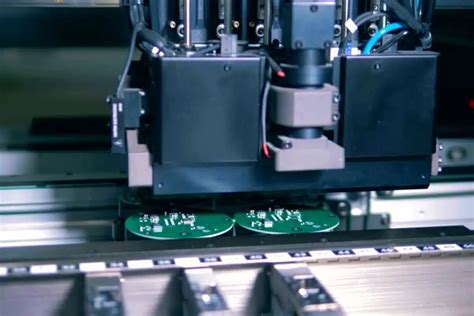
Key Techniques for Efficient Rapid Prototyping
Efficient rapid prototyping is essential for improving product development cycles, and it involves several key techniques that streamline the entire process. One fundamental aspect is the utilization of advanced 3D printing technologies, which allow for quick iterations of design concepts. These technologies enable engineers to produce tangible models rapidly, fostering a more effective design validation phase. Additionally, integrating computer-aided design (CAD) software can significantly enhance accuracy and reduce lead times in creating prototypes.
Moreover, effective communication among team members is crucial in ensuring that feedback is promptly integrated into the prototypes. Utilizing project management tools can further streamline collaborative efforts, ensuring that everyone is aligned on project goals and timelines. When it comes to PCB assembly, employing automated assembly processes can also enhance productivity. Automation decreases the likelihood of human error and accelerates the overall production rate of printed circuit board assemblies (PCBA).
Lastly, embracing an iterative testing approach can lead to continuous improvements in both prototype quality and efficiency in pcb assembly practices. By testing early and often, teams can identify issues sooner in the development cycle, allowing for timely adjustments that ultimately enhance reliability and performance outcomes. In conclusion, adopting these techniques not only improves rapid prototyping but also integrates seamlessly with effective PCB assembly, ensuring a smoother product development journey.

Best Practices in PCB Assembly for Enhanced Speed
To achieve enhanced speed in pcb assembly, it is crucial to implement a series of best practices tailored for efficiency and accuracy. One of the foremost strategies is to utilize automated assembly techniques, which can significantly reduce manual handling time and increase consistency across boards. Additionally, thorough design optimization should be prioritized; ensuring that the layout minimizes the complexity of the assembly process ultimately leads to quicker turnarounds. Employing diligent sourcing practices for high-quality components can also have a pronounced impact; by selecting reliable vendors, you can decrease the likelihood of defects that disrupt the workflow. Furthermore, adopting modular designs allows teams to test individual sections of a circuit board independently, giving them the flexibility to troubleshoot swiftly without halting overall production. Another key element is fostering collaborative communication among engineers, designers, and assembly teams; continuous feedback can streamline processes and surface potential issues early on. With these practices in place, organizations can better navigate common pitfalls associated with rapid prototyping and ensure that their pcba processes are not just quick but also reliable and efficient overall.
Tools and Technologies for Streamlining Prototyping
In the realm of product development, effective pcb assembly and swift prototyping are crucial for success. To enhance efficiency and reduce time-to-market, a variety of tools and technologies have emerged that facilitate this process. For instance, advanced computer-aided design (CAD) software allows engineers to visualize PCB layouts with remarkable precision, ensuring that pcba meets strict specifications before physical production. Moreover, automation in the assembly process significantly decreases human error and increases throughput.
Additionally, implementing agile methodologies and rapid feedback loops can significantly accelerate the development cycle. Utilizing rapid prototyping technologies such as 3D printing can also allow teams to quickly produce physical models of components, which can be iteratively tested and refined. This method not only enhances design validation but also aligns closely with practical manufacturing needs.
Incorporating such innovations into your development workflow can streamline processes significantly, leading to higher quality outputs and better alignment with market demands. Organizations that leverage these tools not only improve their prototyping efficacy but also enhance the overall reliability of their pcb assembly processes, ensuring that product launches are both timely and successful. As such, embracing these advanced solutions offers a pathway to achieving optimal results in today’s fast-paced technological landscape.
Case Studies: Successful Rapid Prototyping Implementations
In the realm of product development, numerous organizations have successfully leveraged rapid prototyping techniques paired with effective PCB assembly methods to accelerate their design cycles and improve product reliability. One notable case is a consumer electronics company that adopted pcba processes to unveil its latest gadget ahead of schedule. By utilizing advanced rapid prototyping tools, the team was able to create functional models in a matter of days rather than weeks. This agility allowed them to gather user feedback early in the design process, facilitating immediate iteration. Another compelling example comes from a medical device manufacturer that integrated PCB assembly solutions into their prototyping strategy. The implementation of streamlined pcba workflows not only reduced errors during production but also significantly decreased time-to-market for their new lifesaving device. These case studies illustrate how embracing innovative techniques in both rapid prototyping and pcba can lead to significant enhancements in speed, quality, and overall project success, allowing companies to stay competitive in an ever-evolving market landscape.
Common Challenges in Rapid Prototyping and Their Solutions
In the realm of rapid prototyping and PCB assembly, various challenges can impede the efficiency and effectiveness of the product development process. One prevalent challenge is the time constraint, as rapid prototyping demands quick turnarounds. To address this, companies often implement automated tools that can accelerate the design and testing phases, enabling teams to focus on refining their designs rather than getting bogged down in production delays. Another significant hurdle is ensuring design accuracy. Errors in early prototypes can lead to costly revisions down the line. To mitigate this risk, employing robust simulation software before actual production helps identify potential flaws early on, thus enhancing the reliability of the final PCBA product.
Moreover, managing material costs can also pose a challenge, particularly for organizations with limited budgets. By opting for materials that offer a good balance between performance and cost without compromising quality, companies can optimize their expenditures while still achieving high-quality prototypes. Additionally, ensuring seamless communication across multidisciplinary teams is crucial for tackling misunderstandings that could arise during development. Establishing clear channels of communication and utilizing project management tools fosters collaboration, ultimately leading to more successful PCB assembly outcomes.
Lastly, navigating varying regulatory standards can be daunting, especially for companies looking to enter global markets. Staying informed about relevant regulations and incorporating compliance checks into the prototype design phase ensures smoother transitions when moving from prototype to market-ready products. By focusing on these challenges and implementing strategic solutions, businesses can significantly enhance their rapid prototyping and PCBA processes, reduce time-to-market, and improve overall product quality.
Future Trends in Rapid Prototyping and PCB Assembly
The landscape of rapid prototyping and PCB assembly (or PCBA) is rapidly evolving, driven by technological advancements and shifting industry demands. One of the most significant trends is the rise of automation in the PCB assembly process, which enhances production speed and minimizes human error. Automated systems can manage everything from component placement to soldering, improving consistency and reliability in PCBA. Additionally, the integration of artificial intelligence (AI) plays a pivotal role in optimizing design processes. AI algorithms can predict potential design flaws or suggest improvements, enabling faster iterations in product development.
Moreover, there is a growing emphasis on sustainable practices within rapid prototyping and PCBA. Companies are increasingly adopting eco-friendly materials and processes to reduce waste without compromising performance. This shift not only aligns with global sustainability goals but also appeals to environmentally conscious consumers.
Another interesting trend is the expansion of agile methodologies in product development. By fostering collaboration between design and manufacturing teams early in the process, organizations can expedite feedback loops, ensuring that prototypes closely align with end-user needs. This approach supports rapid testing and iteration, which are crucial for keeping pace with market demands.
In summary, the future of rapid prototyping and PCB assembly lies at the intersection of automation, sustainability, advancements in technology, and agile practices—an exciting evolution that promises to enhance overall productivity and innovation in product development.

Conclusion: Optimizing Your Product Development Process
In today’s competitive landscape, effective pcb assembly and rapid prototyping are critical to optimizing your product development process. By leveraging innovative techniques and employing best practices, businesses can enhance their development speed while ensuring the reliability of their designs. Utilizing efficient pcba processes allows companies to reduce time-to-market, which can significantly impact overall success. Companies that embrace cutting-edge tools and technologies not only streamline their prototyping process but also minimize errors that could lead to costly delays. Furthermore, understanding the common challenges faced during rapid prototyping enables teams to devise strategic solutions ahead of time, ultimately fostering a more adaptive development environment. As the sector continues to evolve, staying informed about future trends in rapid prototyping and PCB assembly will empower organizations to maintain their competitive edge and deliver innovative products that meet the demands of an ever-changing market.
Conclusion: Optimizing Your Product Development Process
In today’s fast-paced technology landscape, the importance of efficient rapid prototyping and PCB assembly cannot be overstated. Companies must prioritize implementing effective strategies to enhance their product development lifecycle. By leveraging modern techniques in pcb assembly and employing best practices, teams can significantly reduce time-to-market and improve the overall reliability of their products. The integration of advanced tools and automation technologies plays a critical role in streamlining the prototyping process, enabling engineers to iterate designs swiftly and with greater precision. Furthermore, addressing common challenges in pcba ensures that production remains seamless, allowing for quick adjustments and refinements. Ultimately, embracing innovative solutions will position organizations to stay competitive while achieving optimal results in their development efforts.
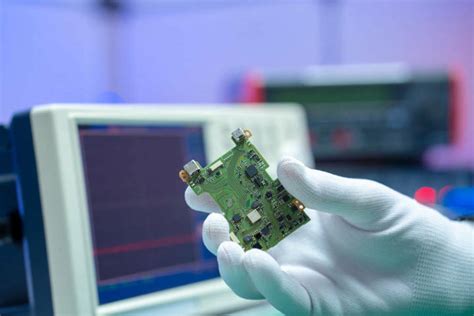
FAQs
What is rapid prototyping and how does it relate to PCB assembly?
Rapid prototyping is a technique used to quickly create a scale model of a physical part or product. In the context of PCB assembly, it enables designers to develop and test PCBA faster, leading to quicker iterations and enhancements in the design process.
What are some common methods used in rapid prototyping for PCBA?
Common methods include 3D printing, CNC machining, and laser cutting. These techniques allow for the rapid creation of models that can be tested and modified before finalizing the PCB assembly process.
How can I enhance the reliability of my PCB assembly?
To enhance reliability in PCBA, it’s important to implement best practices such as thorough testing at each stage, using high-quality materials, and maintaining clear communication with manufacturers throughout the design and assembly process.
What are some challenges in rapid prototyping for PCBA?
Challenges include managing costs, ensuring adequate design verification, and handling potential manufacturing errors. Employing a structured workflow can help alleviate these pain points.
What tools will help streamline my PCB assembly process?
Using software tools dedicated to PCB design such as Altium Designer or Eagle can significantly improve workflow efficiency. Additionally, automated assembly equipment can speed up the pcb assembly process while minimizing human error.
For more information on efficient PCB assembly, please visit our website:

